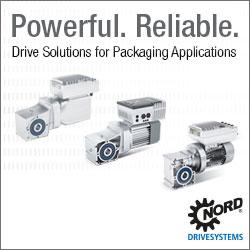Given the criticality of usable data at scale for Industry 4.0, many manufacturers have turned to ISA-95—probably the most commonly recognized data-modeling standard around the world—for guidance.
 Applying ISA-95 in an Industry 4.0 world
Applying ISA-95 in an Industry 4.0 world

Applying ISA-95 in an Industry 4.0 world
Article from | HighByte
Data modeling is all about standardization. It enables interoperability, shows intent, determines trust, and ensures proper data governance. Given the criticality of usable data at scale for Industry 4.0, many manufacturers have turned to ISA-95—probably the most commonly recognized data-modeling standard around the world—for guidance.
Created by a standards committee at the International Society of Automation, the ISA-95 specification defines in detail the electronic information exchange between manufacturing control functions and other enterprise functions, including data models and exchange definitions. The purpose of ISA-95 is “to create a standard that will define the interface between control functions and other enterprise functions based upon the Purdue Reference Model”. Per the committee, the goal is to reduce the risk, cost, and errors associated with system integration.
Historically, ISA-95 has been the guide for many off-the-shelf and bespoke manufacturing execution systems (MES). Today, ISA-95 also helps industrial organizations implement data integrations that link MES, enterprise resource planning (ERP) systems, IIoT platforms, data lakes, and analytics solutions. It also eases the implementation of a unified namespace (UNS) for enterprise data integration.
The specification defines a hierarchal model for systems, detailed information models, and a data flow model for manufacturing operations management (MOM). Let’s take a look at these 3 key attributes in more detail and uncover how the ISA-95 specification can be applied within HighByte Intelligence Hub.
Historically, ISA-95 has been the guide for many off-the-shelf and bespoke manufacturing execution systems (MES). Today, ISA-95 also helps industrial organizations implement data integrations that link MES, enterprise resource planning (ERP) systems, IIoT platforms, data lakes, and analytics solutions. It also eases the implementation of a unified namespace (UNS) for enterprise data integration.
The specification defines a hierarchal model for systems, detailed information models, and a data flow model for manufacturing operations management (MOM). Let’s take a look at these 3 key attributes in more detail and uncover how the ISA-95 specification can be applied within HighByte Intelligence Hub.
ISA-95 and HighByte Intelligence Hub
HighByte Intelligence Hub serves as the integration solution between systems at the same level or different levels in the ISA-95 stack. It also can populate a UNS structured to the ISA-95 hierarchy and can be used to structure a data lake, data warehouse, or database using the ISA-95 models.
1. Hierarchal Model
The hierarchal model in ISA-95 provides a convenient way to structure and align information from different levels of the corporation. In today’s environment with data lakes, UNS, and systems that aggregate information from multiple cells, lines, areas, sites and even enterprises, this organization is very helpful when organizing and annotating information. Companies will find data and systems aligning to different levels depending on their unique production environment, circumstance, and use cases.
The hierarchal model defined in ISA-95 is applicable for organizing data payloads in a UNS and organizing models and instances within HighByte Intelligence Hub. Within the Intelligence Hub, you can set up MQTT outputs with the Enterprise, Site, Area, Line, Cell, or Machine topic structure, so you can organize payloads of data at the appropriate layer in the broker.
The hierarchal model defined in ISA-95 is applicable for organizing data payloads in a UNS and organizing models and instances within HighByte Intelligence Hub. Within the Intelligence Hub, you can set up MQTT outputs with the Enterprise, Site, Area, Line, Cell, or Machine topic structure, so you can organize payloads of data at the appropriate layer in the broker.
2. Information Models
The models within ISA-95 can get very complex and detailed. These models span multiple structures including personnel, equipment, physical assets, and material. They also span production, maintenance, quality, and inventory disciplines. The ISA-95 specification defines the inter-relationships. For example, traceability and analytical data often span multiple levels of the ISA-95 hierarchy and multiple models within a level. It’s not uncommon for manufacturers to merge sensor data with PLC, SCADA, MES, ERP, and other systems that live at different levels.
In HighByte Intelligence Hub, a model comprises multiple attributes and potentially other models. This allows logical models to be built for specific integrations by reusing base components. By implementing ISA-95 within HighByte Intelligence Hub, you can define the required information payload for the target system or analytic.
In HighByte Intelligence Hub, a model comprises multiple attributes and potentially other models. This allows logical models to be built for specific integrations by reusing base components. By implementing ISA-95 within HighByte Intelligence Hub, you can define the required information payload for the target system or analytic.
3. Data Flows
ISA-95 defines the flow of data from different functional models. These functional models could be in a single system, or they can be in separate systems depending on the corporation and manufacturing environment. When integrating with separate systems, it’s important to identify the use case, then the source and target system’s data requirements, and then define the execution or triggering event. You can model these data flows as discrete connections between systems, handled through a data hub, or handled through a UNS.
HighByte Intelligence Hub data flows can map directly to those in the ISA-95 specification. You can implement flows from system to system within HighByte Intelligence Hub as defined in ISA-95. You also can easily implement additional data flows that leverage the same information but are outside the scope of ISA-95. The ISA-95 specification provides many useful hierarchies, models, and flows that are applicable when integrating industrial data.
HighByte Intelligence Hub data flows can map directly to those in the ISA-95 specification. You can implement flows from system to system within HighByte Intelligence Hub as defined in ISA-95. You also can easily implement additional data flows that leverage the same information but are outside the scope of ISA-95. The ISA-95 specification provides many useful hierarchies, models, and flows that are applicable when integrating industrial data.
Next steps
Manufacturers can easily map the components of ISA-95 to HighByte Intelligence Hub and add any additional customization that’s required. By using the Intelligence Hub, the Operations Technology (OT) team will be able to see and modify the data hierarchy, structures, and flows in an application that promote re-use, agility, and the flexibility to easily make changes over time.
If you would like to learn more about how a dedicated DataOps solution can provide a more efficient and secure means of merging, modeling, and moving your industrial data, I invite you to try HighByte Intelligence Hub for yourself. Join the trial program to get access to the latest release, product resources, and a HighByte team member to help guide you through your assessment.
If you would like to learn more about how a dedicated DataOps solution can provide a more efficient and secure means of merging, modeling, and moving your industrial data, I invite you to try HighByte Intelligence Hub for yourself. Join the trial program to get access to the latest release, product resources, and a HighByte team member to help guide you through your assessment.
The content & opinions in this article are the author’s and do not necessarily represent the views of ManufacturingTomorrow
Comments (0)
This post does not have any comments. Be the first to leave a comment below.
Featured Product

NORD Delivers Powerful, Reliable Drive Solutions for Demanding Packaging Applications
When you need quality, flexibility and high efficiency, NORD has you covered with complete drive solutions for primary and secondary packaging, end-of-line packaging, and higher-level applications. NORD supports you through the entire life cycle of your drive systems with pre-sales engineering support, online tools, and a global service network. Drive systems for both vertically and horizontally networked technology with all the options for sensor incorporation and integration into the higher-level control system.
